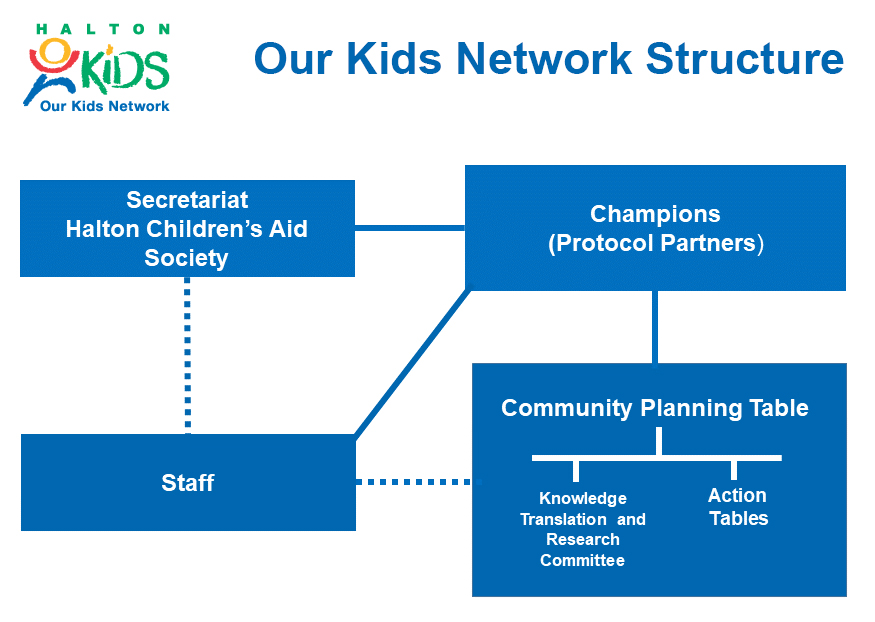Data Portal 2.0
About the Data Portal 2.0 and Resources to Help
The OKN Data Portal 2.0 is an important resource for people who work in the early learning and care field; library systems; child, youth and family services; faith-based organization and the public, education, mental health and children’s services. Data Portal 2.0 users can strengthen their data literacy as they learn to better understand and interpret data. Creating maps and charts using Halton data and their own data can improve communication and stimulate discussion.
The information in the OKN Data Portal 2.0 can help tell convincing and relevant stories about the work professionals do and can help make a stronger case for funding proposals. Service providers can use the OKN Data Portal 2.0 to better understand and interpret data to plan and design evidence-based services and programs, turning research into action.
How can you use the Data Portal
Evaluate your program
Use OKN data to evaluate your program. The Town of Milton Community Services Department used OKN data to determine whether their afterschool program was reaching their target audience, enabling plans for program improvement.
Expand an existing program
Use OKN data to expand your program. ROCK (Reach Out Centre for Kids) used OKN data to identify neighbourhoods with the greatest levels of need within Oakville, in order to guide the expansion of the Our Community Cares program.
Identify benchmarks and goals
Use OKN data to create benchmarks and set goals. The Halton Newcomer Strategy’s Community Indicators Report used newcomer specific data from the Halton Youth Survey to establish the current situation of newcomer’s perceptions of inclusion and engagement.
Develop new programs and initiatives
Use OKN data to create services and supports that meet community needs. In 2015, a committee of regional professionals used OKN data to identify that North Oakville was a neighbourhood with high needs. In collaboration with adult allies, youth in the community established the North Oakville Youth Development Council, which engages the community to create positive change.
Build partnerships
OKN data supports collaboration and partnership. OKN’s Early Years Initiative (EYI) was formed in response to findings from the Early Development Instrument indicating that children in some neighbourhoods experience heightened developmental vulnerability. The EYI provides opportunities for local community groups to work together to plan and develop resources supporting early child development.
Support and bolster funding applications
Use OKN data to support funding applications. The Milton Community Resource Centre used OKN demographic data to support an application for funding to transform a preschool room into a toddler room, which enhanced program delivery and better met the needs of their growing community.
Data Portal Data Archive
Our Kids Network wants to make important data and information open, accessible and usable so everyone can work towards the Halton 7 population results to ensure that children and youth in Halton are thriving. Organized by these population results, OKN data prior to 2015 is stored here for downloading. The Excel tables show the data by year and OKN neighbourhood and municipality. Each file includes metadata describing the indicator, data source and year(s) available.
Data Portal 2.0 Data Archives
Disclaimer
The data in the Data Portal and Our Kids Network (OKN) research reports are produced or compiled by OKN for the purposes of providing community status information. Data and information released from OKN are provided on an “AS IS” basis, without warranty of any kind, including, without limitation, any warranty as to accuracy, suitability for a particular purpose or non-infringement of any intellectual property rights that may be held by others.
Availability of this data and information does not constitute scientific publication. Data and/or information may contain errors or be incomplete. OKN is not responsible for the interpretation and usability or suitability of the data for any intended purpose. It shall be used by the recipient of such information without any reliance on OKN in any manner whatsoever.
*The archived data uses the previous 21 neighbourhood boundaries, which differ from the current 27 neighbourhood boundaries. For this reason and changes in data sources and methodology over time, these results may not be comparable to results currently available in the Data Portal 2.0.
And much more!

